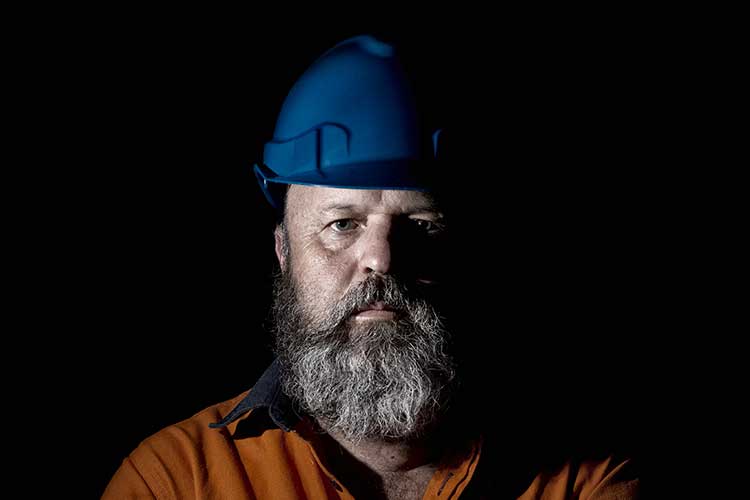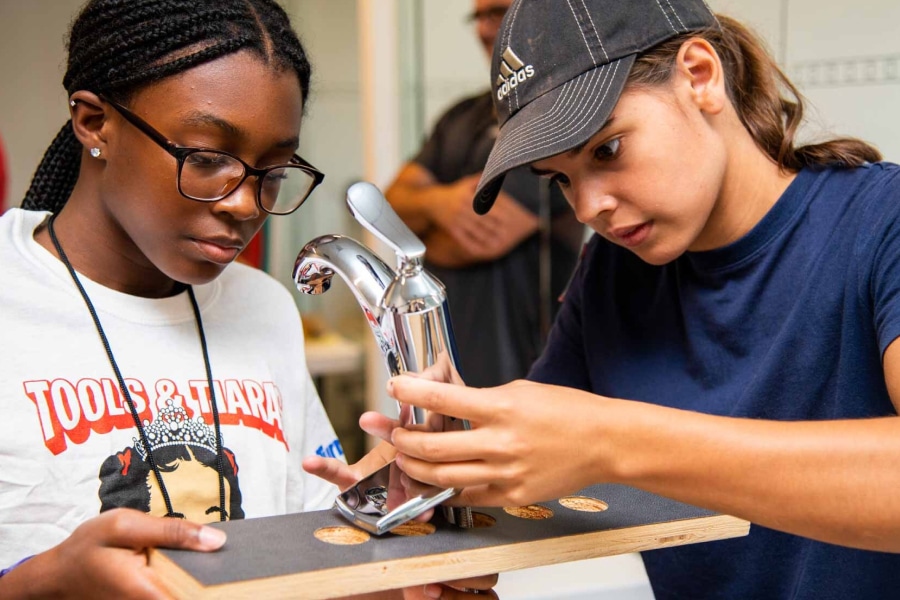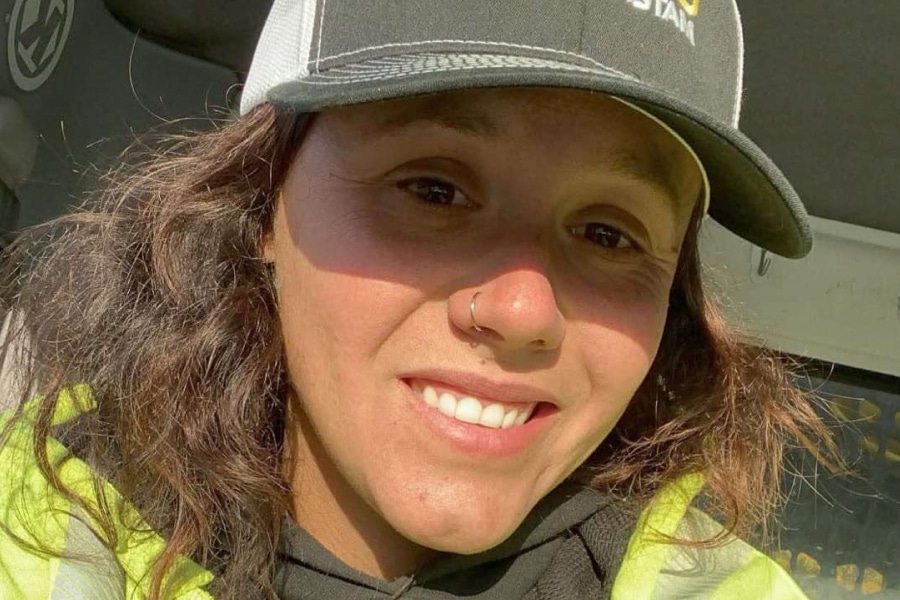Improving minority representation in the architecture, engineering and construction (AEC) industry has long been among the industry’s major goals. A big part of closing the industry’s representation gap is promoting the industry as a viable career path to people at a young age.
Here are three organizations working to inspire young children in the AEC industry.
Diversity in architecture is growing—except for African-Americans
According to the National Council of Architectural Registration Boards’ (NCARB) 2020 report, nearly half the candidates starting the Architectural Experience Program (AXP), a training course for people preparing to attain an architecture license, are women, and about 44% are people of color.
This bodes well for narrowing the diversity gap that still looms large at more advanced career stages. The NCARB report found the advanced career stage gap is narrowing for women and people of color overall. Yet, “no change [was] seen in the proportion of African-American individuals in the profession,” the report said.
The National Organization of Minority Architects (NOMA) is working to increase the number of Black architects in leadership roles, in part by increasing the number of Black students entering the profession through its Project Pipeline.
The goal of Project Pipeline is to “introduce minority students with a focus on black students to architecture with the ultimate goal of creating more licensed black architects,” according to the Project Pipeline website. Its primary vehicle is an architecture summer camp for 6th through 12th graders.
Both the national organization and local NOMA chapters run summer camps. Normally, kids receive hands-on learning of architecture and design basics. This year’s summer camps were virtual due to the COVID-19 pandemic. Since its inception, more than 10,000 kids have gone through NOMA camps.
Increased representation is vital in filling skills shortage
A pre-COVID-19 survey conducted by the Associated General Contractors of America (AGC) and Sage found contractors optimistic about the industry’s growth trajectory, but not about its ability to find well-trained, qualified workers.
According to the U.S. Bureau of Labor Statistics (BLS), women make up 10.3% of the construction labor force, with Blacks and Asians making up 6.4% and 1.9%, respectively. These poor representation numbers mean there’s a potential well of untapped talent out there for the industry to put to work.
Some organizations are approaching the representation shortfall as an opportunity to improve the industry. One such organization is the Construction Career Collaborative (C3) in Houston, Texas.
C3’s mission is to enhance working conditions and professional growth opportunities for construction workers. As part of that mission, it runs a variety of programs designed to attract girls and underrepresented minorities into the industry, such as its #SheBuildsHouston conference.
C3 ran its first #SheBuildsHouston event in 2019 with 1,100 girls in attendance. The annual event brings together construction-related businesses and industry organizations to give girls from one of the city’s most underserved school districts hands-on experience with skilled trades.
“At #SheBuildsHouston, the girls put on the hard hats and the safety gear,” said Angela Robbins-Taylor, C3 director of people development, compliance and operations. “With guidance from mentors, they get to operate construction tools and equipment and explore construction materials.”
The conference also includes panels where the girls hear directly from women who are master craftspeople and those who own contracting businesses.
While this year’s #SheBuildsHouston was cancelled due to COVID-19, Robbins-Taylor expects C3 to hold one in late 2021, with more than 3,500 girls attending.
Finally, C3’s Education Advisory Committee provides guidance and support to teachers and administrators so they can better steer kids at their schools toward skilled trades. The outreach programs extend into elementary schools through high school graduation.
“We provide the teachers with resources like lesson plans and videos and access to curriculums as well as contests,” Robbins-Taylor said.
No one just falls into an engineering major
If the industry wants to see more women in architecture or engineering, the work needs to begin early in girls’ education. The Women in Engineering Program (WEP) at the Cockrell School of Engineering at the University of Texas works to motivate girls’ interest in engineering as early as kindergarten and doesn’t start to let up on its programming until they’re embedded into subspecialty departments as undergraduates.
WEP also works closely with the university’s minority engineering program. As a result, Cockrell ranks 14th in the United States in Bachelor of Science Engineering degrees awarded to underrepresented minorities and Hispanics and 11th in such degrees awarded to women, according to data reported to the American Society for Engineering Education by 427 engineering schools.
Women make up 10.3% of the construction labor force, with Blacks and Asians making up 6.4% and 1.9%, respectively. These poor representation numbers mean there’s a potential well of untapped talent out there for the industry to put to work.
One of its programs is Girl Day, an annual festival of science shows and activities for kindergartners through 8th graders. Girl Day grew out of Introduce a Girl to Engineering activities, part of the annual international Engineers Week held each February. More than 42,000 elementary and middle school girls have participated since in UT’s Girl Day since it began in 2002.
Among the volunteers helping the kids are women enrolled as engineering students at the university. One of the goals of the day is also to start developing leadership skills in the young women going into engineering. Next year’s Girl Day festival will be entirely virtual, including the “Introduce a Girl to Engineering” day on February 20, 2021.
The annual summer camp WEP holds for high school girls was virtual this year and achieved only half its normal enrollment. “The digital access challenges are real,” said Tricia Berry, WEP director. “We recognize that the virtual camps didn’t have the same reach as when we could bring the students on campus. We still ended up with diversity, as far as race and ethnicity and as far as location around our state, but I’m sure we were hitting students who had access to the technology.”
When women enter UT as undergraduate engineering students, WEP provides a variety of support and mentorship programs for them. The WEP team also tracks the subspecialties to focus its recruiting and resources toward building up the engineering majors where women haven’t reached parity.
For example, women used to make up more than 40% of civil engineering majors, but those numbers have been declining.
“When environmental engineering was broken out into its own major in 2017, we saw drops in the percentage of women in civil and chemical engineering, which had environmental components,” Berry said. “Chemical has since recovered. It’s actually 40% this fall, but we’re still struggling with representation in civil engineering. That’s a new area now where we’re saying, ‘Okay—we need to pay attention in this space.’”












